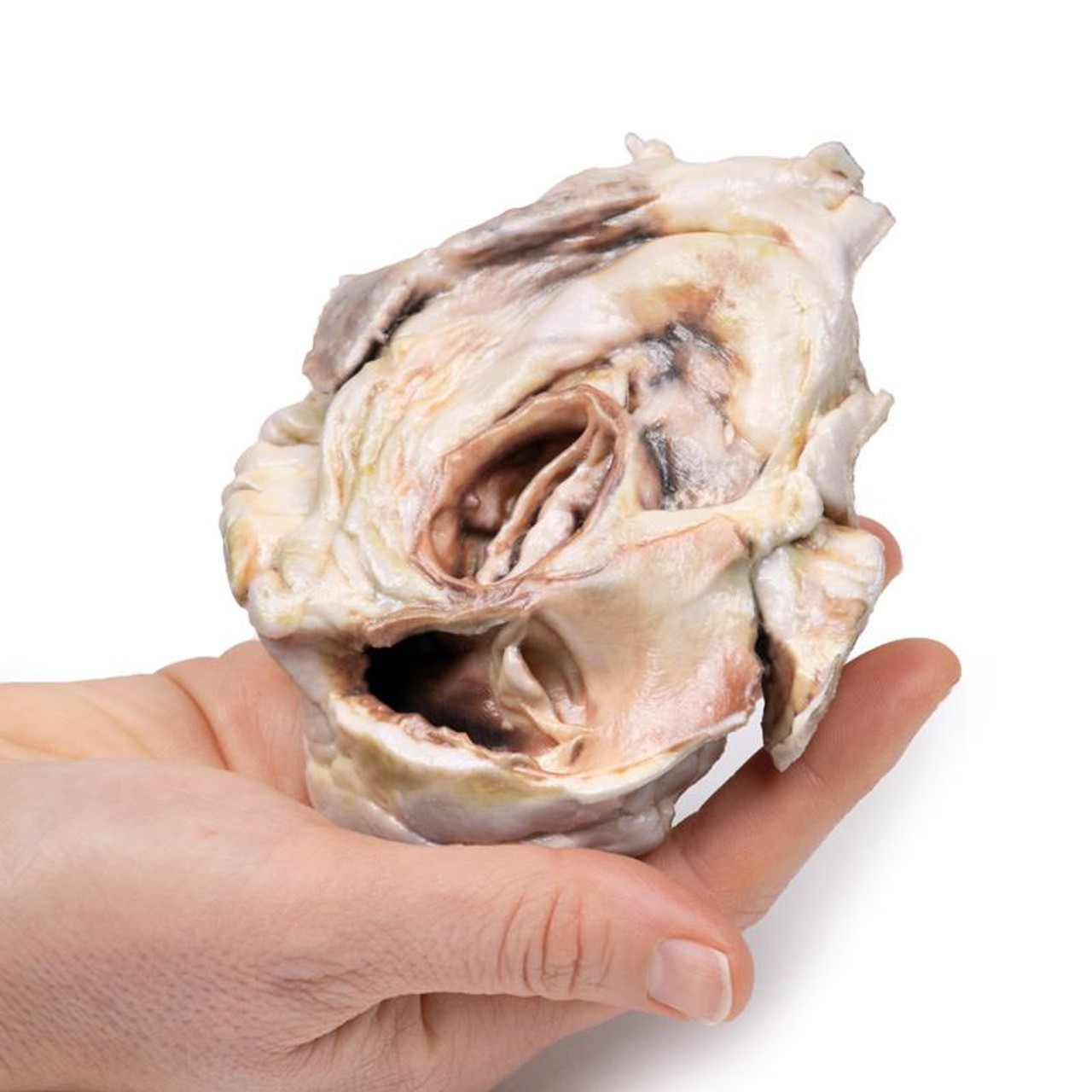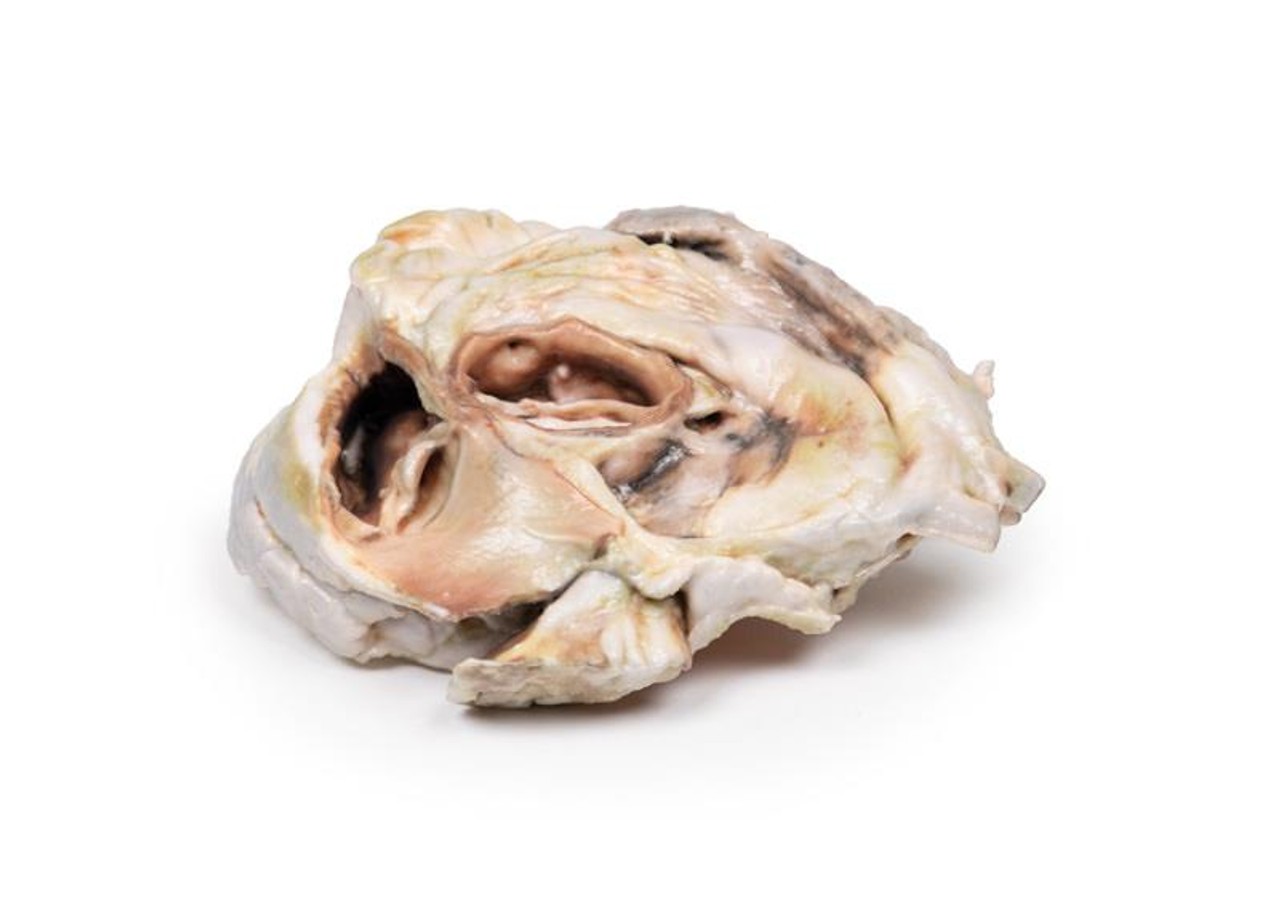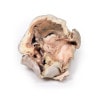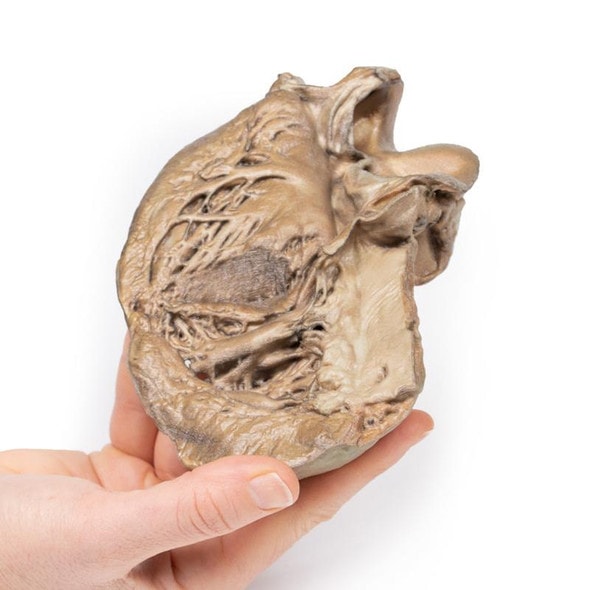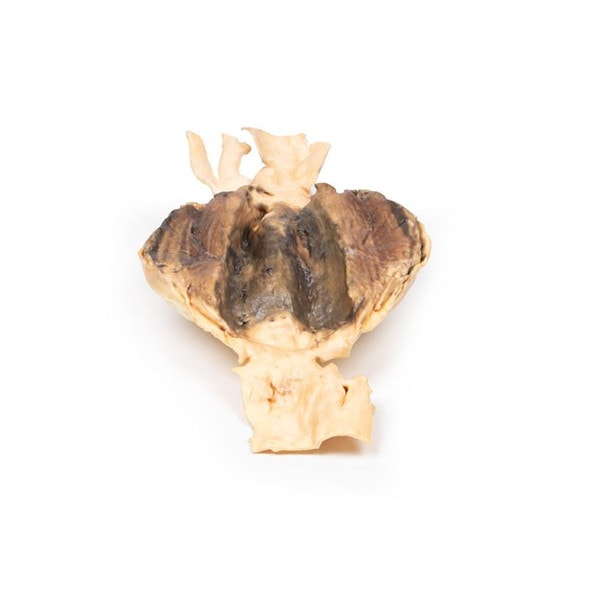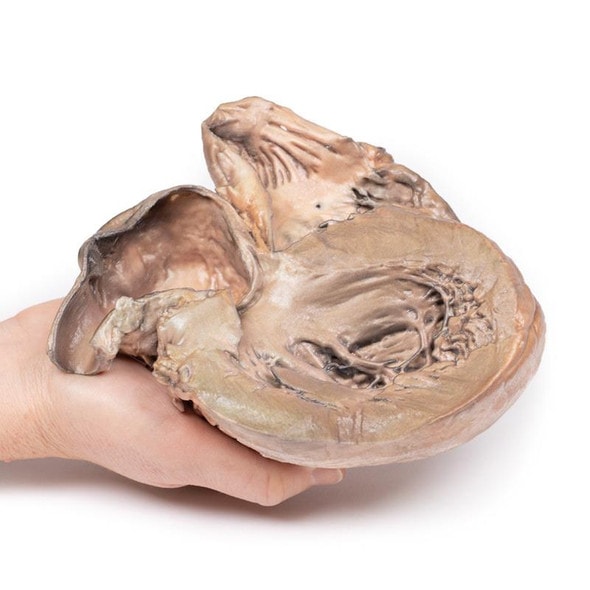- Home
- Anatomy Models
- Vascular System Anatomy Models
- 3D Printed Calcified Aortic Valvular Stenosis Bicuspid Aortic Valve
Description
Developed from real patient case study specimens, the 3D printed anatomy model pathology series introduces an unmatched level of realism in human anatomy models. Each 3D printed anatomy model is a high-fidelity replica of a human cadaveric specimen, focusing on the key morbidity presentations that led to the deceasement of the patient. With advances in 3D printing materials and techniques, these stories can come to life in an ethical, consistently reproduceable, and easy to handle format. Ideal for the most advanced anatomical and pathological study, and backed by authentic case study details, students, instructors, and experts alike will discover a new level of anatomical study with the 3D printed anatomy model pathology series.
Clinical History
There is no clinical history for this specimen.
Pathology
The specimen is partial horizontal 1.5cm slice through the plane of the left atrium whose smooth internal lining together with the left auricular appendage and part of the left ventricle are visible on the inferior aspect. On the superior aspect the pulmonary trunk (and part of the pulmonary tricuspid valve) and aorta, including the affected abnormal bicuspid valve, are clearly discernible. Calcified aggregations or thickenings on the opposing margins of the valve can be seen from this upper perspective. There is also a region of calcification on one of the cusps of the pulmonary valves.
Further Information
Bicuspid aortic valve is a common congenital abnormality that is often not detected into adulthood. Indeed, it is the most common congenital anomaly of the heart. Aortic valve stenosis can range from mild to severe, and signs and symptoms generally develop when narrowing of the valve is severe. Some people with aortic valve stenosis may not experience symptoms for many years. Signs and symptoms may include abnormal heart sound (heart murmur), radiating chest pain (angina), shortness of breath and chest pain, especially during times of increased activity, heart palpitations' sensations of a rapid, fluttering heartbeat. The heart-weakening effects of aortic valve stenosis may lead to heart failure. Heart failure signs and symptoms include fatigue, shortness of breath, and swollen ankles and feet.
When the aortic valve is narrowed, the left ventricle has to work harder to pump a sufficient amount of blood into the aorta and onward to the rest of the body. This can cause the left ventricle to thicken and enlarge. Eventually the extra work of the heart can weaken the left ventricle and the heart overall, with it ultimately not being able to function properly (heart failure), causing other downstream problems.
Calcium deposits build up on the valve particularly those with a congenitally abnormal aortic valve, such as a bicuspid aortic valve resulting in stiffening of the valve cusps. This stiffening narrows the aortic valve lumen and thereby increases the blood flow.
Advantages of 3D Printed Anatomical Models
- 3D printed anatomical models are the most anatomically accurate examples of human anatomy because they are based on real human specimens.
- Avoid the ethical complications and complex handling, storage, and documentation requirements with 3D printed models when compared to human cadaveric specimens.
- 3D printed anatomy models are far less expensive than real human cadaveric specimens.
- Reproducibility and consistency allow for standardization of education and faster availability of models when you need them.
- Customization options are available for specific applications or educational needs. Enlargement, highlighting of specific anatomical structures, cutaway views, and more are just some of the customizations available.
Disadvantages of Human Cadavers
- Access to cadavers can be problematic and ethical complications are hard to avoid. Many countries cannot access cadavers for cultural and religious reasons.
- Human cadavers are costly to procure and require expensive storage facilities and dedicated staff to maintain them. Maintenance of the facility alone is costly.
- The cost to develop a cadaver lab or plastination technique is extremely high. Those funds could purchase hundreds of easy to handle, realistic 3D printed anatomical replicas.
- Wet specimens cannot be used in uncertified labs. Certification is expensive and time-consuming.
- Exposure to preservation fluids and chemicals is known to cause long-term health problems for lab workers and students. 3D printed anatomical replicas are safe to handle without any special equipment.
- Lack of reuse and reproducibility. If a dissection mistake is made, a new specimen has to be used and students have to start all over again.
Disadvantages of Plastinated Specimens
- Like real human cadaveric specimens, plastinated models are extremely expensive.
- Plastinated specimens still require real human samples and pose the same ethical issues as real human cadavers.
- The plastination process is extensive and takes months or longer to complete. 3D printed human anatomical models are available in a fraction of the time.
- Plastinated models, like human cadavers, are one of a kind and can only showcase one presentation of human anatomy.
Advanced 3D Printing Techniques for Superior Results
- Vibrant color offering with 10 million colors
- UV-curable inkjet printing
- High quality 3D printing that can create products that are delicate, extremely precise, and incredibly realistic
- To improve durability of fragile, thin, and delicate arteries, veins or vessels, a clear support material is printed in key areas. This makes the models robust so they can be handled by students easily.


